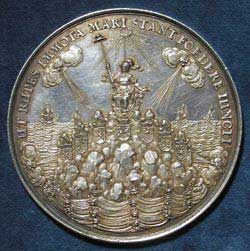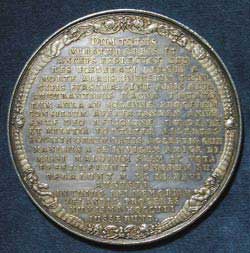

|
ON THE CONFEDERATION OF THE SEVEN NORTHERN PROVINCES OF THE NETHERLANDS |
|
|
This medal ratifies the confederation of the seven provinces of the Netherlands after the death of William II of Nassau-Orange. The provinces of the republic were Holland, Zeeland, Utrecht, Gelre, Overijssel, Friesland and Groningen. Each province was governed by the Provincial States and by a stadtholder. In theory, the stadtholders were elected and subordinate to the States-General. However, the princes of Orange-Nassau were chosen as stadtholders of most of the provinces. There was a constant power struggle between the Orangists, who supported the stadtholders, and the Regent's supporters. After the Peace of Westphalia several border territories were assigned to the United Provinces. William II, Prince of Orange (1626-1650), was stadholder of several Dutch provinces. In 1641 he married Mary, daughter of Charles I of England. He was succeeded by his son William III (of Orange) of England. LINK to History of
the Dutch Republic (from wikipedia) |
|